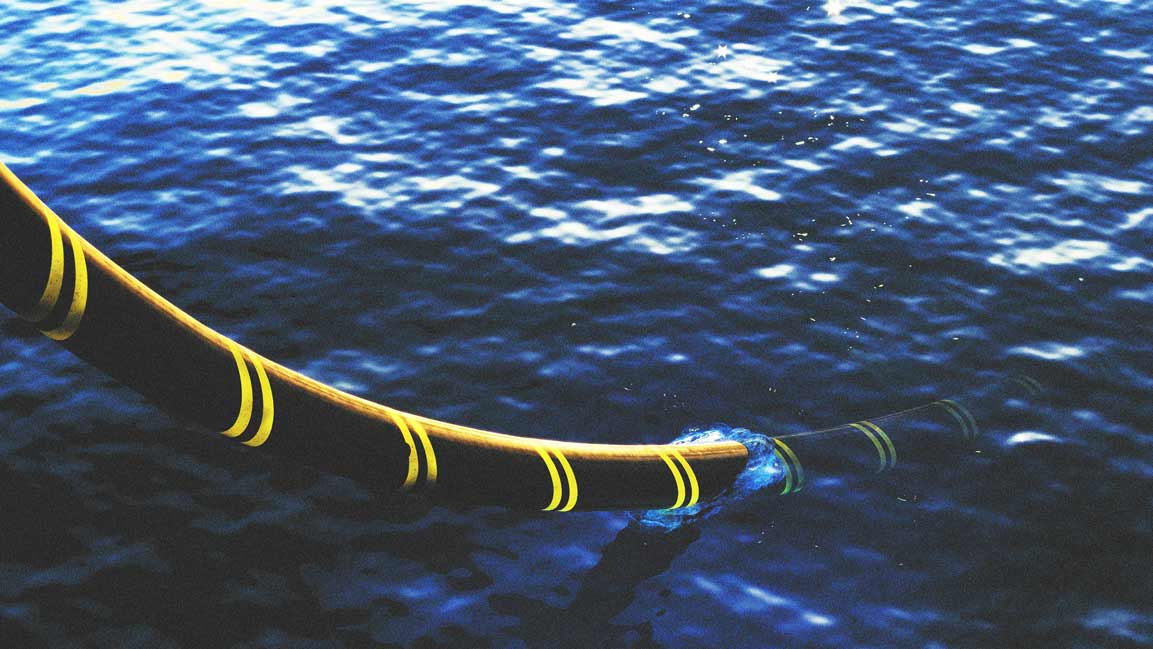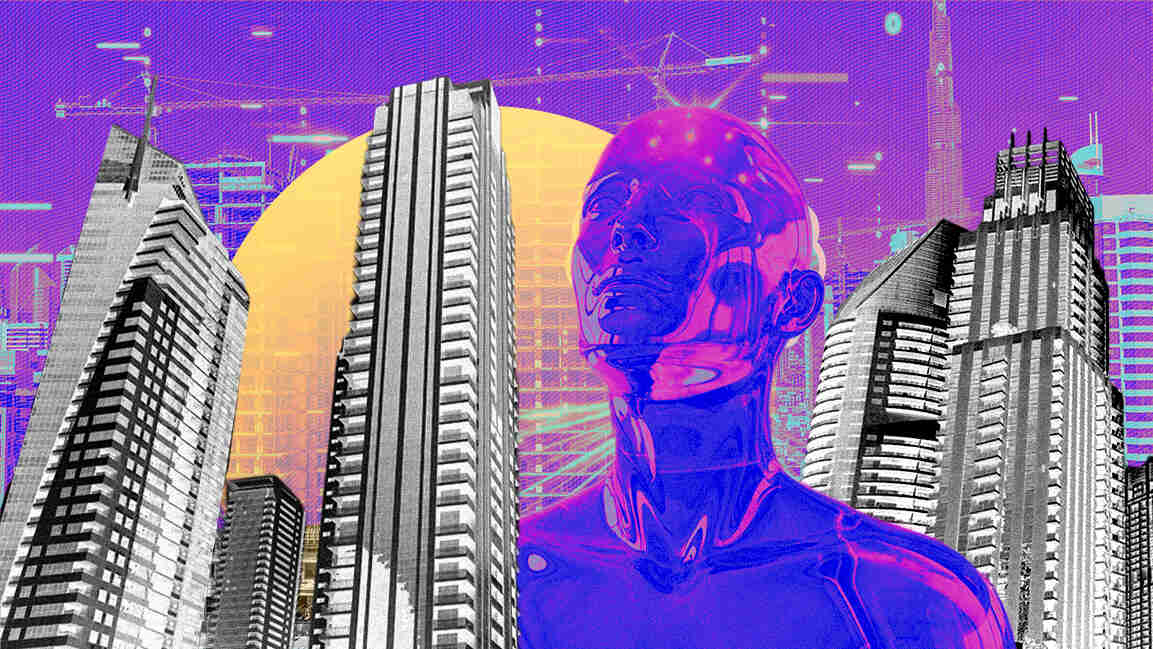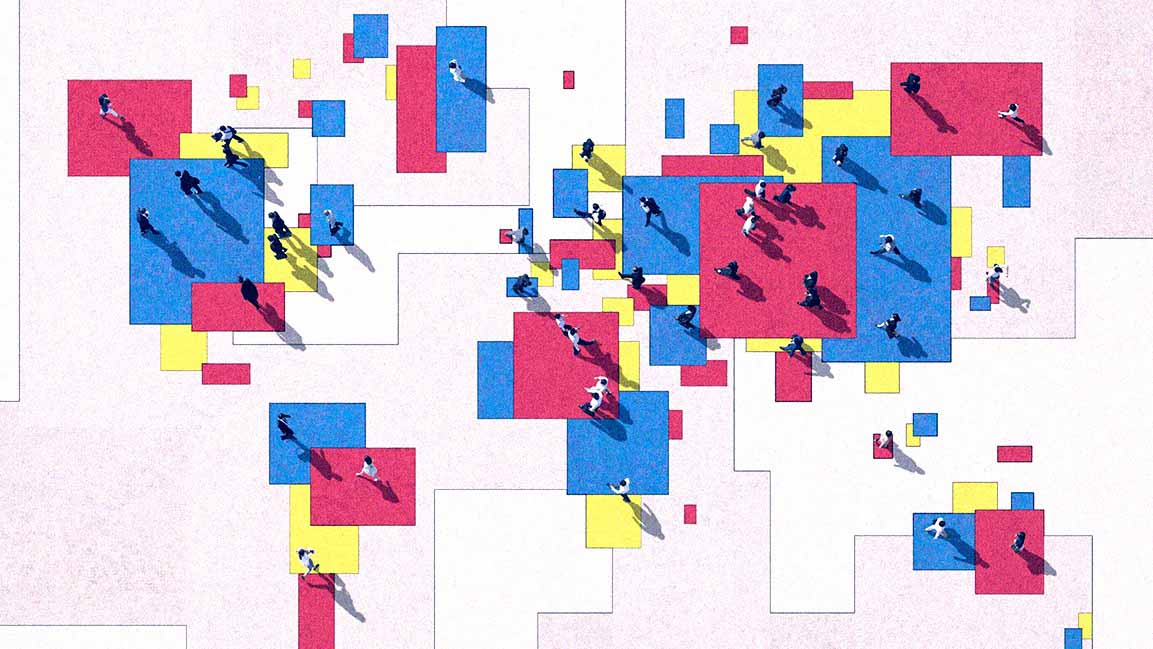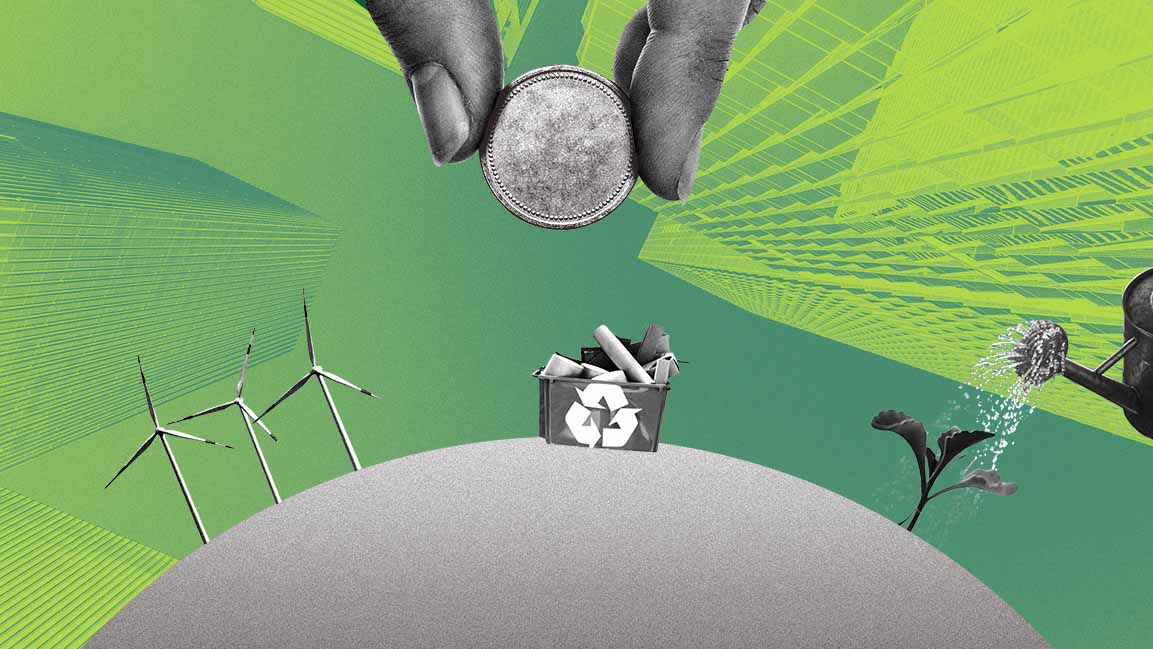- | 9:00 am
Make it in the Emirates: Is the nation’s manufacturing ambitions bearing fruit?
To speed this up and streamline the process, the country started with identifying products for local manufacturing, giving rise to investment and company set-ups.
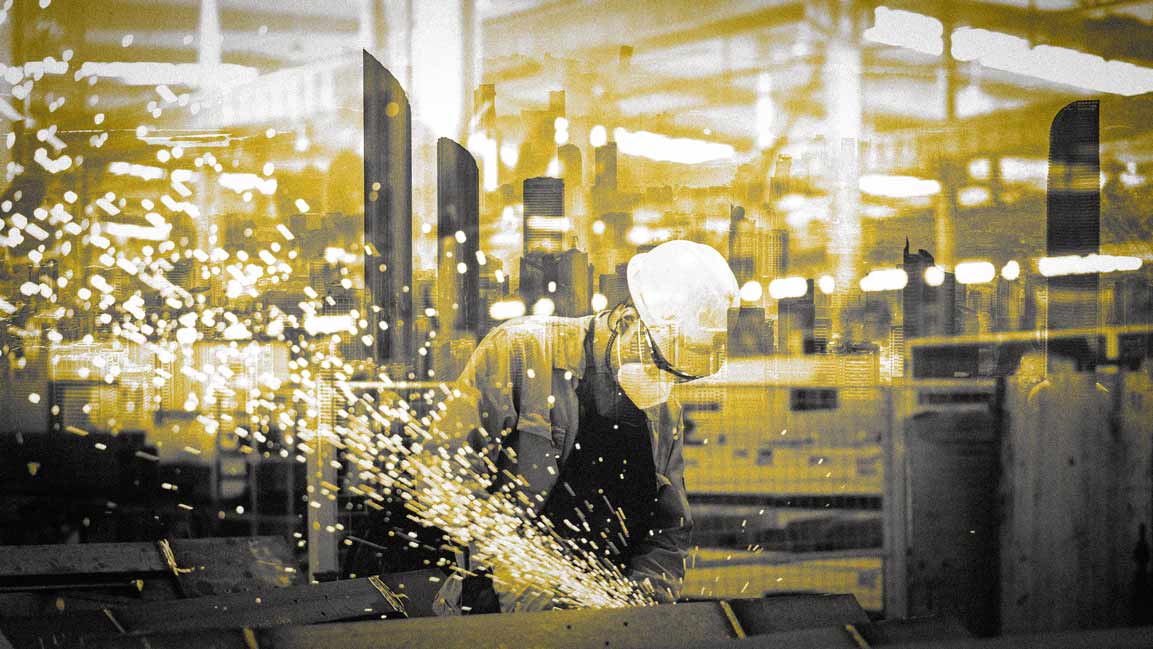
The UAE has long been regarded as a regional trading and business hub, having invested heavily in trade and logistics infrastructure to accelerate its efforts to diversify the economy.
Then, its economic focus shifted to a new target when the government launched the Make It in the Emirates (MIITE) in 2021, declaring that manufacturing would spur its economy.
Its intent was clear: to develop manufacturing capabilities in sectors like clean energy, food, pharmaceuticals, and automotive while creating opportunities for locals.
Since launching the initiative to galvanize efforts to become a manufacturing hub, the country has introduced Operation 300bn to enhance the industrial sector’s role in the economy and increase its contribution to GDP to over $80 billion by 2031. It has also established a strategy of negotiating bilateral trade agreements, with a key aim of boosting non-oil exports to global markets.
The government has also dished out varied support measures, such as the National In-Country Value Program (ICV) and the National Program to Transform Technology, to help local and foreign businesses establish roots in the country while government-owned banks, such as the Emirates Development Bank, have allocated billions in funding, enabling and enhancing domestic manufacturing capabilities.
The ICV program redirects as much spending as possible towards UAE-made goods and services to boost the growth of domestic industries.
That’s the stuff of sustainable strategies that lift all boats, spur gears in factories, and drive job creation—a combination many countries dream of.
IS IT PAYING OFF?
However, after four years, it’s pertinent to ask: Has the flagship scheme launched to help the country realize its aim of becoming a manufacturing powerhouse paying off?
It’s getting there. Manufacturing’s share in GDP was 15.1% during the first nine months of 2024.
Industrial exports also surged, reaching $53.7 billion in 2024—a 68% rise since 2020. Job creation has kept pace, too.
“The UAE’s manufacturing sector has delivered a strong performance since the Operation 300bn strategy launch in 2021. As of 2024, the industrial sector’s contribution to GDP surpassed AED 210 billion and is firmly on track to exceed the AED 300 billion target by 2031,” says Borko Handjiski, Partner, Government, and Public Institutions Practice, Oliver Wyman – India, Middle East, and Africa.
He adds that this growth has been driven by the expansion of the ICV program, which has incentivized companies to localize more of their value chains, reducing reliance on foreign suppliers and strengthening domestic capabilities, and a marked increase in the export orientation of national industrial champions.
“A striking example is EDGE Group, which grew its share of international booked orders from 5% to 50% within five years,” says Handjiski.
“The UAE has been investing in developing new advanced manufacturing capabilities across strategic sectors such as aerospace, green hydrogen, semiconductors, and next-generation mobility.”
Abu Dhabi has seen notable progress, with its manufacturing sector the largest non-oil contributor to its GDP at 9.5% in 2024. The emirate, which constitutes about half the UAE’s industrial sector, wants to increase the contribution from its industrial sector to GDP to nearly $47 billion by 2031.
Launched in 2022, the Abu Dhabi Industrial Strategy 2031 is central to this journey. It has put in place key programs to support manufacturers, including the Energy Support Program, Land Support Program, and Smart Manufacturing Acceleration Program.
“We are already seeing tangible outcomes. In 2024, Abu Dhabi’s manufacturing sector increased its share of GDP by 2.7%, contributing AED 111 billion to the economy. Non-oil exports rose 15% in 2024, reaching AED 107 billion, while industrial production licenses increased 10% YoY,” says Eng. Ahmed Al Alawi, Head of Trade and Industry Development, Abu Dhabi Investment Office (ADIO).
“At its core, the emirate offers global manufacturers and investors what few places can match with its reliable infrastructure, competitive operating costs, investor-friendly regulation, and a stable macroeconomic environment.”
Dubai, which recently launched its ICV program to encourage government entities to direct more of their spending towards domestic suppliers, continues to lead with diversified industrial clusters, including electronics, aerospace components, and consumer goods.
Other emirates also have manufacturing, which contributes a higher share to their GDP. According to Emirates NBD research, manufacturing contributes about 16% to Sharjah’s GDP, while in Ras Al Khaimah, an industrial hub, the sector clocks in at around 27%.
To speed this up and streamline the process, the country started with identifying products for local manufacturing, giving rise to investment and company set-ups.
In 2023, UAE companies committed over $32 billion in investment for MIITE, and the number of products identified for local manufacturing surged to over 1,400 compared to the 300 announced the previous year.
Recently, Osama Amir Fadl, Assistant Undersecretary for the Industrial Accelerators Sector at the Ministry of Industry and Advanced Technology, said that the MIITE forum contributed to attracting over $5 billion in new industrial investments in 2024. He highlighted that the ministry has presented procurement opportunities for more than 2,000 national products valued at nearly $40 billion, with expectations for this number to grow.
“Over the last five years, manufacturing has solidified its position as a key driver of the UAE’s economic diversification, with strong growth across sectors such as metals and chemicals,” says Mario Mateiro, Partner, Bain & Company Middle East.
Driven by Operation 300bn and substantial investment and operational activity from national sovereign wealth funds (ADQ, Mubadala), Mateiro says the sector is attracting investment and expanding local industrial scale and capability (upstream integration of alloys value chain, diversification towards high value-added products).
Local spending under the ICV program has reached over $94 billion, and the initiative has created more than 22,000 jobs for Emiratis.
OPPORTUNITIES FOR FOREIGN INVESTORS
The ambitious manufacturing localization strategy presents opportunities for foreign investors, such as partnerships with local companies, access to sovereign wealth funds, or investing capital onshore. Furthermore, investors can explore free zones to benefit from tax incentives and streamlined regulations.
Also, with countries such as China staring at increasingly harsh tariffs on exports to the US, analysts say the UAE has a strong comparative advantage.
Last year, the Wall Street Journal reported that the world’s largest chipmakers, TSMC and Samsung Electronics, discussed building potential chip projects in the UAE in the coming years, which could be worth more than $100 billion.
Also, the recent visit of President Trump to the country deepened US-UAE tech cooperation, including the launch of the Stargate UAE Alliance, a collaborative initiative aimed at accelerating frontier technology development, particularly in AI and semiconductors.
“Market whispers around a potential Nvidia plant being set up in the UAE have further intensified interest. If realized, this would mark a strategic transfer of cutting-edge chip design and AI hardware capabilities to the region, creating new high-value jobs and specialized training opportunities,” says Vijay Valecha, CIO at Century Financial.
Meanwhile, Abu Dhabi is accelerating its transformation into a mobility powerhouse with the launch of ADIO’sAutomotive Program. This program aims to industrialize the future of mobility from an end-to-end ecosystem that includes smart manufacturing, R&D, vehicle restoration, auctions, and motorsport.
Al Alawi says this program is expected to contribute over $27 billion to the GDP by 2045, attract over $2 billion in foreign direct investment, and create 7,000 skilled jobs.
“World-leading automotive players are already committing to Abu Dhabi. Faraday Future is establishing a regional HQ and R&D center for AI-powered EVs, and Star Charge is deploying a next-generation charging network.”
LOCAL IMPACT
Over the last couple of years, the incentivized domestic manufacturing push has seen small and big companies across sectors start building in the country, increasing production and job creation.
In 2022, global technology and software company Emerson teamed up with Abu Dhabi industry major ADNOC to manufacture critical industrial equipment domestically.
“Since we established our UAE operations in the 1990s, we’ve grown from a small team to 843 employees across state-of-the-art facilities spanning 220,000 square meters in the UAE,” says Widad Haddad, Vice President & General Manager at Emerson for UAE, Oman, Yemen, and Lebanon. “Our UAE-based teams manufacture valves and advanced instrumentation — not just assembling but engineering solutions tailored to regional needs.”
Haddad adds, “Today, we export UAE-manufactured products globally. We’re proving that high-value technology can be conceptualized, manufactured, and scaled from the Emirates for worldwide impact.”
According to Anand Kumar, Managing Director of Abra, a homegrown luxury retail fit-out company, MIITE significantly enhances local sourcing through the ICV program as “more UAE-made materials become readily available for our projects, reducing lead times and increasing reliability.”
“In terms of skilled labor, the focus on Emiratisation and advanced training is helping to build a more specialized and industry-ready workforce. This is a major advantage for companies like ours that rely on expert craftsmanship,” says Kumar.
Orbitworks, a next-generation satellite manufacturing venture, is also contributing to local manufacturing growth. In KEZAD, the company has built a 50,000-square-foot facility with full assembly, integration, and testing capabilities, the first of its kind in the region.
“Our inaugural satellite constellation, Altair, enters production during the second half of the year,” says Business Development Director Ralph Koyess. “Our work reflects a broader national shift toward complex, high-value manufacturing that creates both economic impact and long-term technical depth.”
WHAT SETS THE UAE APART
While other countries like India, Indonesia, Vietnam, and Bangladesh are stiff competitors, the UAE stands out due to its favorable trade environment, ease of obtaining commercial and industrial licenses, and access to world-class services and amenities that encourage international investment and expansion.
Specialized industrial zones, such as KEZAD, Dubai Industrial City, Sharjah’s SAIF Zone, and Jebel Ali Free Zone, have become major hubs for manufacturing and job creation.
The UAE hosts a growing network of high-quality suppliers, enabling manufacturers to scale quickly without compromising standards, says Haddad. “Its connectivity to key source markets for raw materials and components, as well as to high-demand destination markets across the GCC, Africa, and Europe, ensures smooth and efficient value chain operations.”
Kumar adds that Dubai offers a significant competitive edge in design-led, high-quality manufacturing because of its world-class infrastructure, which includes state-of-the-art factories, advanced logistics networks, and reliable utilities, all of which are critical to operations for companies like Abra.
“Also, access to a diverse and highly skilled workforce enables us to execute complex, high-end designs with precision and excellence,” Kumar adds.
CREATING JOBS AND WORKFORCE TRANSFORMATION
According to various reports, the manufacturing and wider industrial sector employed over 750,000 people as of 2023 across high-impact sectors such as food and beverage processing, petrochemicals, pharmaceuticals, and advanced machinery.
“The UAE is uniquely well-positioned to leapfrog into the industries of the future, transitioning its workforce into high-tech sectors such as semiconductors, advanced manufacturing, and medical technology,” says Handjiski.
He adds that several national strengths underpin this potential. One is the country’s bold strategic investments, often led by sovereign wealth funds, which are increasingly focused on localizing the production of advanced technologies through global partnerships. Another is the UAE’s world-class quality of life, which continues to attract top-tier talent worldwide to live and work here.
Finally, the country’s sustained investment in education and skills development, exemplified by institutions like Mohamed bin Zayed University of Artificial Intelligence (MBZUAI, is cultivating a new generation of homegrown, globally competitive talent.
“The ecosystem is in place, spanning strategy, investment, infrastructure, and talent, to enable a successful transition into advanced manufacturing and beyond,” says Handjiski.
In terms of the ecosystem, the country is also investing in clusters to establish its leadership in future-defining industries, with a robust manufacturing component at the heart of each cluster.
In the last 18 months, Abu Dhabi has launched the Health, Endurance, Longevity, and Medicine clusters for life sciences, AgriFood Growth and Water Abundance for food and water innovation, and the Smart and Autonomous Vehicle Industries clusters for next-generation mobility.
These clusters combine technical education, global exposure, applied learning, and real-time engagement with frontier technologies.
“It’s about aligning talent with the industries that will define the next era of economic leadership,” Al Alawi says. “We are applying this model across priority sectors, from precision manufacturing and life sciences to space and clean energy, strategically positioning Abu Dhabi as a launchpad for next-generation industries.”
Valecha says the UAE places human capital at the center with programs like “AI for All” to upskill citizens in future technologies. At the same time, Emiratisation policies “aim to increase the participation of nationals in high-tech private sector roles.”
Koyess says the satellite manufacturing industry is already seeing a leap. “Our teams are working on satellites equipped with multiple payloads, onboard AI, and state-of-the-art hardware.”
As more companies take a build-local approach, he adds we will see a workforce that’s familiar with advanced manufacturing processes and working at global standards. “That shift will define the next phase of the UAE’s industrial growth.”
However, Mateiro says that while the UAE is targeting investments in semiconductors, advanced manufacturing, and medical devices, the impact of these investments on the composition of the local workforce will be gradual.
Access to top talent in these verticals remains highly competitive and constrained globally, and manufacturing currently represents only about 10–15% of the UAE’s total workforce. “This means that even high relative growth will take time to translate into a significant shift at the national level. “
“The most likely outcome is a phased transition, with workforce adjustment occurring within UAE’s specialized industrial hubs and free zones – driven by a mix of foreign expertise, targeted local labor upskilling, and sector-specific policy support—rather than a leapfrog across the broader labor market,” adds Mateiro.
IS THERE A NEED TO INCREASE COMPETITIVENESS?
Analysts indicate that the UAE has spent recent years establishing a strong foundation to attract manufacturing, and this effort is beginning to show results. The country has implemented agencies to support investments in manufacturing and has clearly identified the sectors where it seeks to draw international manufacturing opportunities.
“With world-class logistics, competitive tax policies, and access to global markets, it offers unparalleled efficiency for manufacturers,” says Amjad AlQaqa’a, VP of Sales Middle East & Africa at John Crane. “The government’s strong focus on Industry 4.0, sustainability, clean energy, and a growing pool of skilled talent further boosts its appeal. The UAE is uniquely positioned to be one of the leading manufacturing hubs in the region and attract future-focused industrial investment on a global scale.”
However, what is needed is an increase in UAE’s competitiveness through the addition of jobs at higher skill levels. For starters, initiatives and partnerships with educational institutions can help build a pipeline of skilled professionals with technical expertise and problem-solving abilities.
“By promoting diversity—such as advancing women in engineering—the UAE can strengthen its innovation capacity and secure long-term economic growth by creating high-skill jobs in critical industries,” adds AlQaqa’a.
Big names are coming in and making headlines, and what is certain is that the UAE’s manufacturing spurt will continue. The sector will grow and evolve at a pace different from other Asian countries.
“The manufacturing sector is not only expanding its economic footprint but is also becoming a steady source of high-quality employment and innovation,” says Handjiski.












